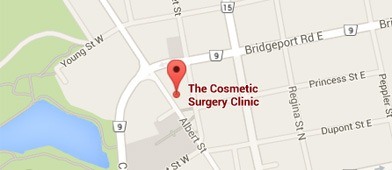
By now, everyone knows that opioids like fentanyl, hydromorphone and Percocet, among other drugs, are a big problem in Canada. How big? Sixteen Canadians are hospitalized every day with opioid related overdoses. In the year 2016, 2861 Canadians died of an opioid overdose. That’s eight people every single day of the year. That is more than the number of people killed in all the car accidents on all the highways in Canada.
What does this have to do with Canadian doctors in general and the team at The Cosmetic Surgery Clinic in particular? One common pathway into the world of opioid abuse is through prescriptions written by Waterloo plastic surgeons like us. To quote a recent article on the subject:
“Since the early 1980s, the volume of opioids sold to hospitals and pharmacies for prescriptions in Canada has increased by more than 3000%. In 2016, over 20 million prescriptions for opioids were dispensed, which is equivalent to nearly one prescription for every adult over the age of 18 years, making Canada the second-largest consumer of prescription opioids in the world, after the USA.”
(Source: https://www.ncbi.nlm.nih.gov/pmc/articles/PMC6034966/)
How Can Our Team Help?
As a team of health care professionals who do prescribe medications including opioids, and as concerned Canadians, all of us at The Cosmetic Surgery Clinic care about this issue and we asked ourselves if we could help in any way. The answer is “yes”.
The entire patient care team at The Cosmetic Surgery Clinic recently met to review our historical medication prescribing pattern. We found that we could change the way we do our surgery, change the way we manage post-operative pain, and, most importantly, change the way we use post-operative pain medications.
Reducing the Quantity of Pills Prescribed
We started by simply reducing the number of post-operative opioid pain tablets we prescribe. We had noted in the past that our patients would occasionally tell us that they didn’t need all the pills we prescribed. That’s a problem, because research has shown that “extra” pain pills abandoned in a bathroom medicine cabinet can fall into the wrong hands and be abused, leading to long-term drug abuse issues. So why prescribe 30 or 40 tablets, if most people only need 15 or 20? We just reduced the number. Simple.
If that solution sounds too simple to be any good, you’re right. It is. Simply reducing the number of opioid pain pills might reduce the number of pills in circulation, but we certainly don’t want our patients in pain after surgery!
Refining Our Surgical Methods
So, we changed the way we do our surgery by:
- Using shorter incisions.
- Dissecting tissues more gently to reduce trauma and post-operative inflammation.
- Using large quantities of dilute, long-acting local anesthesia, skillfully placed so our patients need less oral pain medication after surgery.
- Having patients wear post-operative garments that support tissues and reduce swelling to minimize pain.
We are also big believers in therapies like post-operative lymphatic drainage massage to minimize swelling and speed up recovery time.
Prescribing Opioid Alternatives
We also opened our eyes to a large number of medications beyond opioids. We use plain old-fashioned acetaminophen (Tylenol). We use anti-inflammatory drugs like celecoxib (Celebrex). Acetaminophen and anti-inflammatory drugs have been around for ages, they are safe, and they are very effective. Sadly, in the age of oxycodone, Oxycocet, hydromorphone and other common opioid medications, the “old-fashioned” drugs have been largely forgotten or ignored. Sometimes we add drugs like pregabalin (Lyrica), which is a very effective drug that helps settle nerves and can be helpful when used to treat pain after surgery. We even use homeopathic remedies like Arnica to help reduce post-operative bruising and swelling.
Setting Patient Expectations for Post-Operative Pain
Lastly, and perhaps most importantly, we make a big effort to educate our patients about what to expect post-operatively. Knowing how much pain to expect, when it will start, when it will peak, and when it will wane is important information for us to explain to our patients. The surgeons and the patient coordinators go over it during our consultations before surgery. The anesthesiologist (learn more about anesthesia at TCSC), as well as the recovery room nurses, review the expectations and the plan at the end of the operation before our patients go home. And our post-operative care nurse reviews the plan again at all of our post-operative clinic visits. Knowing which part of the post-operative pain control regimen to use when and for how long is information every one of our patients should have.
So far, our plan is working. We are prescribing far fewer opioids. With the addition of the measures described above, we have not seen any increase in post-operative pain or discomfort, and we are so pleased to be doing our part to keep all Canadians safe from the scourge of opioid addiction and overdose.
Feel free to contact us online with any questions or call our office at (519) 804-9822
